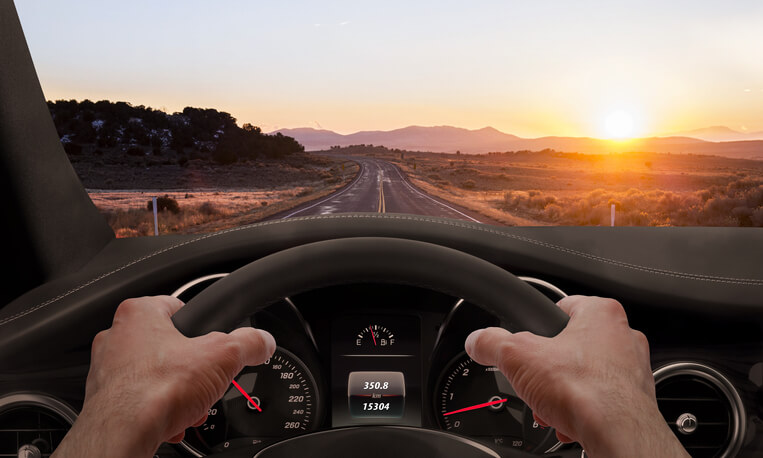Use a Harness
The first time you put a harness on your dog, your dog may object. However, if you make it a habit, your pets will quickly adjust to the new system, especially as the proper harness for your dog will fit comfortably and will still provide some room to move around.
Properly securing your dogs will also help protect them in the event of an accident, much in the way your seatbelt protects you. It will also prevent your dogs from jumping into your lap while you’re driving, which would cause an immediate distraction that could endanger both you and your fur babies.
The Window: Up or Down?
Everyone knows dogs love sticking their heads out the windows of moving cars, and they just look so cute and happy when they do. However, what your dog wants and what is best for your dog are not always the same thing. First, breathing in all that rushing air can be bad for your dog’s lungs. There is also the danger of debris kicked up by wind or other vehicles. Driving at 65 miles an hour, a tiny rock can make a crack in your windshield, which is made of glass meant to withstand the impact.
Your dog is not meant to withstand that impact, so the debris of the road can be a definite health hazard. Many dogs would enjoy a compromise instead. Keep the windows down an inch or two so they’ve got the fresh air coming in, but don’t roll the windows down so far they can stick their heads out.
Driving with Cats
The absolute best advice I’ve ever heard for driving with cats is DON’T. But if you absolutely must drive with your cat to somewhere farther than the vet’s office, you’ll want to take some precautions. Your cat probably hates the cat carrier, but it’s still the best tool to protect him or her while driving. Even if the inevitable ear-piercing meowing drives you crazy, the cat carrier is necessary to keep your feline friend in good health.
If you’re driving a long distance, you should also keep a small litter box in the car and allow your cat access to it whenever you stop, which should be frequently. You’ll also want to make sure your kitty has water available. Finally, be patient with your cat when the trip is over. He or she might not like you very much for a few days.
DON’T LEAVE YOUR ANIMALS IN A HOT CAR
This is fairly common knowledge at this point, but it still happens, so it still bears repeating. A car that is not running air conditioning and has the windows up on a hot day can be twenty degrees hotter than the outside temperature within 10 minutes. As a human, you wouldn’t want to be trapped in a small space at 120 degrees. Now imagine doing that in a fur coat. Every year, thousands of pets (and children) die in hot cars. This can even happen with the windows cracked if the day is hot enough.
Several states have even taken action about this issue by enacting “Good Samaritan” laws that will allow passerby to break the windows of unattended cars with dogs inside. So keep both your dog and your car safe by taking your dog with you when you leave the car, or leaving your dog at home, where it’s cool and safe.

 Live Chat
Live Chat










